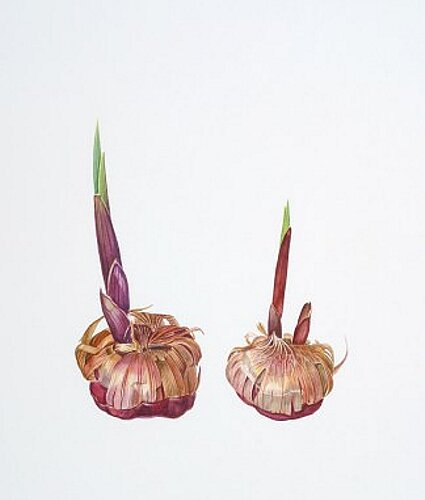
Forcing bulbs may sound cruel, but the term merely means that you’re encouraging the plants to bloom early by treating them in a special way. You can force potted bulbs into early bloom, but they still need 8 to 16 weeks to chill (generally the larger the bulb, the longer the chilling time). Place the bulbs in the fridge, in an unheated garage that doesn’t freeze, on chilly basement stairs, or in a cold frame (a wooden or concrete block box buried in the outside soil during the cold months). Some of the easiest and most popular bulbs to force are paperwhites.
As soon as you pot the bulbs you want to force, you have to keep them cool and the soil lightly damp. If the soil dries out, their roots won’t form, and if the temperatures are too warm, the flower buds in the bulbs may end up being blind or will blast (they’ll shrivel and never develop into full blossoms).
Forcing spring bulbs has two stages, and the first is the rooting period. For the rooting stage, place the potted bulbs in any cool (40–50°F), dark spot for 10 to 16 weeks. Some varieties take longer than others. Don’t worry if the temperatures aren’t in this range every day; the temperature range is just the ideal. The important point is that the bulbs are in a cool, not freezing, place to root. A refrigerator is perfect. Tip: Before moving the potted bulbs to the next stage, look at the drainage holes in the pots. Roots should be growing out of the holes; if they aren’t, put the potted bulbs back into a cool, dark area until they are. One of the most common ways people fail in this game is by not allowing the bulbs to root sufficiently before going to the next stage. Alternatively, the bulbs may be ready to come out of the big chill when you see at least an inch of top growth and the bulbs don’t move when you try to wiggle them by hand. After the bulbs are well-rooted, you can move them to the growing-on phase, where the foliage starts to grow and the eventually bulb blooms. First, you want the bulbs to adjust to warmer temperatures and higher light, so place the rooted bulbs in their containers in a cool, bright spot that’s around 60°F for a few weeks. Remember to keep the soil lightly moist. Next, move the bulbs to an area that’s slightly warmer — mid to high 60s — and very bright to finish the plant’s growing-on cycle. A sunny, south-facing windowsill is fine. Turn the pots a quarter turn each day; otherwise, the stems will lean toward the light. You can also place the bulbs so their foliage is a few inches from a two-tube, or preferably four-tube, fluorescent light fixture.
The bulbs should bloom in about three to four weeks. The blossoms will last longer if you move the bulbs to a spot that’s cool (in the lower 60s) and not quite as bright (without direct sunlight).


